National League Cy Young a three-way race

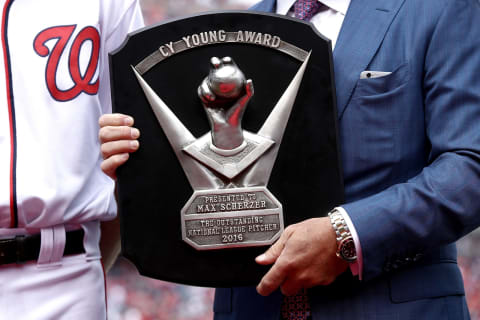
With a month left in the season, the race for the National League Cy Young Award is probably down to three names.
The National League Cy Young Award front-runners, Washington’s Max Scherzer, Philadelphia’s Aaron Nola and New York’s Jacob deGrom, appear to be tightly bunched. In one order or another, they rank 1-2-3 in earned run average, pitcher WAR, innings pitched, and Win Probability Added.
Since each can expect to make about five more starts, the decision may well come down to those final appearances. One additional factor is that all three pitch in the NL East, setting up the prospect that they could oppose one another down the stretch.
In the unlikely chance that a fourth candidate emerges from the pack to best all three, who could that candidate be? In Los Angeles, Clayton Kershaw is always available. In Denver, Kyle Freeland has emerged from obscurity to assume a front-rank role in the pennant race. In Atlanta, Mike Foltynewicz gives the NL Eat a potential fourth candidate, with the additional fillup that Foltnewicz is the ace of the front-runners for the divisional title.
This year’s top five is likely to have a certain similarity to recent Cy Young lists. Scherzer and Kershaw have both already won three awards, while Greinke and deGrom are perennial candidates.
At the same time, Freeland and Foltynewicz, along with Patrick Corbin in Arizona and possibly Josh Hader in Milwaukee may inject fresh blood and fresh data into the discussion.
For the record, here’s a look at the 2017 National League Cy Young Award top 5: 1. Scherzer; 2. Kershaw; 3. Stephen Strasburg; 4. Greinke; 5. Kenley Jansen.
Here’s a deeper look at the credentials of the leading candidates for the National League Cy Young entering the season’s final month.
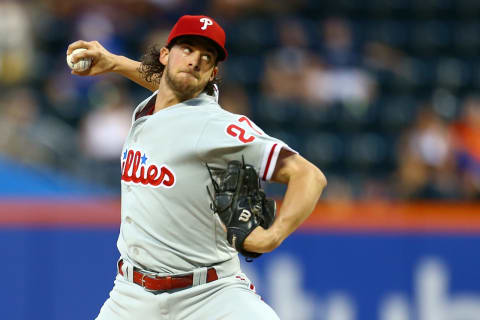
Aaron Nola, Philadelphia Phillies
Old-school stats: 15-4, 2.23 ERA in 28 starts, 182 IP
New-school stats: 9.0 WAR, 5.0 Win Probability Added, 40 Adjusted Pitching Runs, 198 Adjusted ERA+
The case for Nola: Nola’s 9.2 WAR is the best for any National League pitcher. Basically nobody hits Nola; right-handers are hitting just .205 against him and left-handers are batting .190. His consistency is off the-chart: a .199 batting average against in the season’s first half, and .196 thus far in the second half. In statistically his worst month, June, he went 3-0 with a .323 ERA in 30 innings of work. He is death against the other guy’s best hitters. The collective batting average of everybody hitting in the 3 and 4 holes against Nola this season is just .208.
The case against Nola: Sunday’s one-sided defeat to the Cubs was a lost opportunity to persuade skeptics who may yet see Nola as an upstart candidate when measured against the more familiar deGrom, Kershaw and Scherzer. He is likely to make five more September starts, and they’ll give him an opportunity to regain credibility as a contender. Three are against the Mets and Marlins, followed by what are likely to be two limelight starts against the Rockies and Braves. For Nola to win the National League Cy Young Award, he must show up big in those decisive games.

Jacob deGrom, New York Mets
Old-school stats: 8-8, 1.68 ERA in 27 starts, 182 IP
New-school stats: 8.1 WAR, 4.9 Win Probability Added, 42 Adjusted Pitching Runs, 218 Adjusted ERA+
The case for deGrom: The Mets ace has faced 712 batters, second behind only Scherzer. That means either he or Scherzer is on pace to influence more batter-pitcher matchups in 2018 than any other National League player. deGrom also ranks first in Fielding Independent Pitching and Adjusted Pitching Wins. His .978 WHIP is sheer genius. Right-handers haven’t a clue against deGrom; they’re batting a collective .174 with a .240 slugging average. In any two-strike count, batters from either side might as well give up. They’re hitting .108 for the season against deGrom in those counts with a .141 slugging average.
The case against deGrom: How can a guy who doesn’t hit double digits in victories – and deGrom may not – be the National League Cy Young winner? Granted, he’s been the poster child for the existence of a hoo-doo this year, including three starts since Aug. 1 in which he’s allowed two earned runs or fewer yet come away with a record of 0-2. deGrom faces the Dodgers tonight, the Phillies this weekend and the Red Sox next week. All are tough challenges and it would help deGrom’s chances to actually win one or two of them.

Max Scherzer, Washington Nationals
Old-school stats: 16-6. 2.22 ERA, 28 starts, 186.2 IP
New-school stats: 8.8 WAR, 4.9 Win Probability Added, 40 Adjusted Pitching Runs, 191 Adjusted ERA+
The case for Scherzer: As noted in the discussion about deGrom’s candidacy, Scherzer is likely to influence more batter-pitcher matchups this season than any other NL player. That’s based on his 187 innings pitched to date and his league-leading 0.884 WHIP. When you are facing more batters and allowing fewer of them to reach base, that’s an award-worthy combo. Scherzer has fanned 5.5 batters for every one he’s walked, and he’s carrying a 16-6 record with a 2.22 ERA. He also leads the league in strikeouts – for the third year running – with 249. That’s 12 Ks for every 9 innings of work. He kills right-handers, holding them to a .179 batting average so far this season. He is equally effective at home or on the road, witness the microscopic difference between his home (.180) and road (.178) batting averages against.
The case against Scherzer: As with his potential MVP candidacy, it’s a matter of guilt by association. Scherzer may have done everything noted in the paragraph above, but he still pitches for the season’s worst under-achievers. He also faces a potential familiarity bias. Scherzer has already won the Cy Young three times including the National League Cy Young in 2016 and 2017, so there could be a sense among some voters to spread the honor among fresher and equally deserving candidates. Scherzer will have a quick chance to prove he remains the National League’s main mound man, with starts today against St. Louis, this weekend against the Cubs and next week against Atlanta.
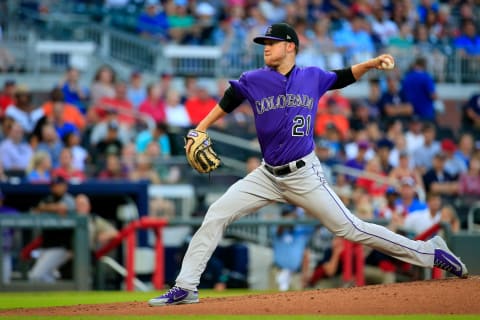
Kyle Freeland, Colorado Rockies
Old-school stats: 13-7, 2.96 ERA in 28 starts, 170 innings.
New-school stats: 6.8 WAR, 3.2 Base-Out Wins Saved, 3.2 Adjusted Pitching Wins
The case for Freeland: He’s the closest thing you get at a mile elevation to a pitching phenom. Freeland is 13-7 with an ERA under 3.00 working a solid 170 innings, so this is no fluke. It’s also not a case of excelling away from Coors and surviving at home. Opponents are batting just .219 against Freeland in Denver . With 2 out and runners in scoring position, opponents are managing just a .131 average against Freeland.
The case against Freeland: A year ago nobody heard of this guy; now you want to anoint him the league’s best pitcher with a National League Cy Young Award? Just two years ago he went 11-10 with a 3.89 ERA – and that was in the minors. With Colorado last year, he was 11-11 but with a 4.10 ERA. All of that suggests that a bit more time for consideration is in order before advancing this guy to the head of the National League pitching class. Like a lot of pitchers, Freeland has yet to establish that he can get the same batter out repeatedly. The batting average against him the third time through the order is .285, and from pitches 76 on it’s .275.
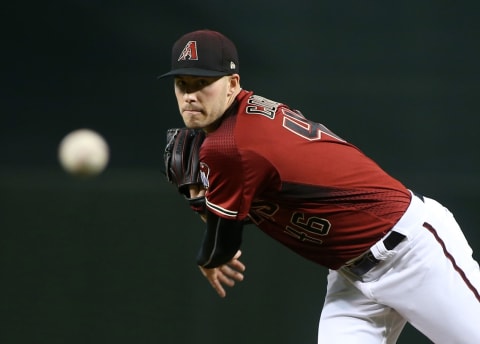
Patrick Corbin, Arizona Diamondbacks
Old-school stats: 10-5, 3.06 ERA in 28 starts, 174 innings
New-school stats: 4.2 WAR, 2.8 Base-Out Wins Saved, 2.7 Adjusted Pitching Wins
The case for Corbin: This is a guy on a career roll. Two seasons ago Corbin’s ERA was 5.15; it fell to 4.03 last year and is 3.06 right now. Given his role in Arizona’s climb into contention, it may be time to board the C-train. He’s been especially solid down the stretch with a 1.95 ERA over the last four weeks. Batters leading off an inning hit just .154 against Corbin, so he spends minimal time in trouble. With two outs and runners in scoring position, the batting average against Corbin is .204.
The case against Corbin: The case against Corbin is pretty straightforward. It is not at all clear that he is the best pitcher on his own team, much less the league. After all Greinke has three more wins, a better ERA and has worked (a few) more innings. His 10-5 record, while significant, is hardly overwhelming. Taking all that into account, voters may see Corbin as a second-tier candidate worthy of National League Cy Young support but not hardware. After all, his career record only just this season nudged above .500.
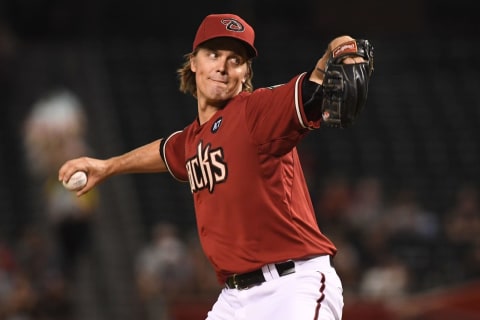
Zack Greinke, Arizona Diamondbacks
Old-school stats: 13-9, 2.97 ERA in 28 starts, 176 innings.
New-school stats: 4.1 WAR, 2.9 Base-Out Wins Saved, 2.8 Adjusted Pitching Wins
The case for Greinke: Greinke has made every one of his appointed 28 starts for the D-Backs, a major reason why they remain in the NL West hunt. He leads the team in innings pitched, and his 1.045 WHIP is stellar. He’s allowing just 2.1 walks per 9 innings and he’s faced a team-leading 706 batters. Greinke has been an absolute rock at home, allowing a .199 batting average against at Chase Field. He’s also picked it up down the stretch, with a .190 batting average against in the season’s second half. He finished fourth in last year’s National League Cy Young voting, and his 2018 numbers to date are generally better, with a 2.97 ERA (against 3.20 in 2017).
The case against Greinke: He has a lower WAR than five other pitchers including his teammate, Patrick Corbin. He ranks only 7th in ERA, 9th in hits per 9 innings and is outside the top 10 in Win Probability Added. Factoring all that into the equation, Greinke may deserve a finish in the top 10, but he is not the league’s best pitcher this season.
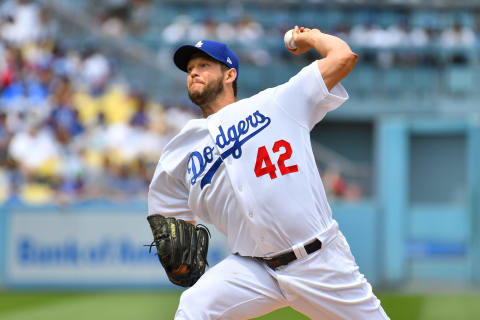
Clayton Kershaw, Los Angeles Dodgers
Old-school stats: 6-5, 2.40 ERA in 21 starts, 131 innings
New-school stats: 3.5 WAR, 2.6 Base-Out Wins Saved, 2.4 Adjusted Pitching Wins
The case for Kershaw: Hey, he’s Clayton Kershaw. This is the guy with three previous National League Cy Young awards and two runners-up, one of them last season. Need more reasons to vote for him? Okay, his 2.40 ERA this year is only fractionally off last season’s 2.31, the Dodgers are solidly in contention in the NL West, and if they get to the post-season Kershaw is certain to be a big reason again. He has a 163 ERA+ — 100 is average — and he’s walked fewer than one batter every six innings. He is also his own personal closer. In two-out situations, opponents are batting just .190 against Kershaw.
The case against Kershaw: The fundamental issue is workload. Injuries have limited Kershaw to 21 starts this season and 131 innings. deGrom, Scherzer and Nola have comparable or better numbers with a half dozen more starts and 50 more innings. As good as Kershaw has been, he’s rarely pitched beyond the seventh inning, and in nearly two-thirds of his starts he hasn’t made it that far. The Dodger team leader in both starts and innings is a fellow named Blake Wood, and nobody’s talking about him for the Cy Young Award. If Kershaw is no longer the Dodger workhorse, how can he still be the league’s top pitcher?
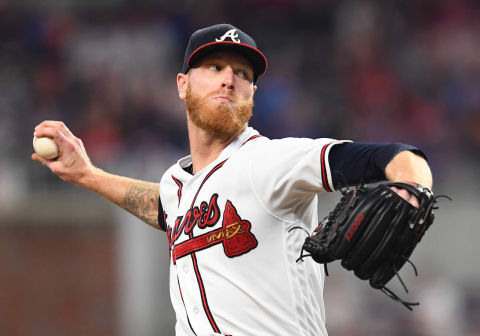
Mike Foltynewicz, Atlanta Braves
Old-school stats: 10-9, 2.80 ERA in 26 starts, 151 innings
New-school stats: 1.9 Adjusted Pitching Wins, 141 Adjusted ERA+
The case for Foltynewicz: He’s the acknowledged ace of the most surprising pennant contender in the National League. That ought to count for something. Foltynewicz has allowed just 114 hits in 151 innings to date, and he’s striking out 10.9 batters every 9 innings. He’s also getting better at the most critical point of the season, having compiled a 1.32 ERA in August. Foltynewicz has a solid knack for avoiding trouble; he’s allowed just a .159 batting average with no outs in an inning.
The case against Foltynewicz: The case against Foltynewicz is simple: Other guys are better. He does not rank among the top 10 in pitcher WAR or batters faced, he trails deGrom, Nola and Scherzer in ERA, he also trails all three of them plus his teammate, Julio Teheran, in hits per inning, and he stands only 10th in Adjusted Pitching Wins. Beyond that, he has utterly no National League Cy Young track record, having received not a sniff of a vote since coming into the league in 2014. While Foltynewicz’s 2.80 ERA is nearly two points improved from last season, voters might be content to reward him with a nice fourth or fifth this year and see what happens in 2019.
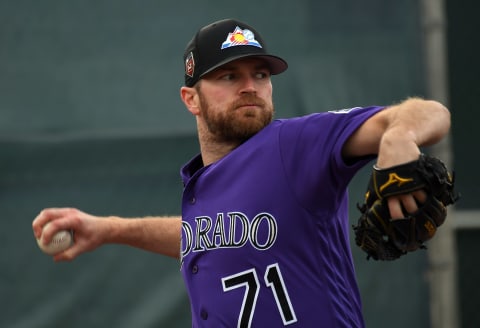
Wade Davis, Colorado Rockies
Old-school stats: 2-6, 4.72 ERA in 59 appearances. 37 saves
New-school stats: +0.4 WAR
The case for Davis: The argument for Davis rests entirely on this question: Where would the Rockies be without him? That in turn hinges on what you think of the save as a valuable stat. Davis has 37 of them, more than any other National League reliever. Davis’ 37 have divided almost perfectly between easy and difficult: 12 by one run, 13 by two runs and 12 by three runs. He has fanned 63 batters in 55 innings, more than one per inning. He gets extra credit for having done half of that in Colorado. If the Rockies succeed in their playoff push, Davis is the likely guy to be on the mound for the final out of the pivotal game.
The case against Davis: His performances have been uneven. He was substandard in June (a .263 batting average against) and not much better in August (.243.) For a supposed shutdown closer on a contender, those aren’t great. Three-hole hitters are batting .250 against Davis, so his performance in best-vs.-best situations has been lukewarm. And if he gets behind in the count, it’s bombs away. Opponents are batting .361 against Davis with count leverage.
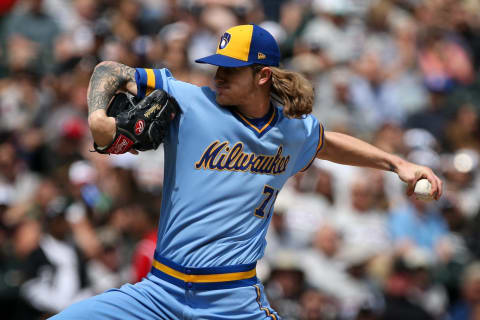
Josh Hader, Milwaukee Brewers
Old-school stats: 4-1, 2.01 ERA in 45 appearances, 11 saves.
New-school stats: 3.5 Win Probability Added
More from Call to the Pen
- Philadelphia Phillies, ready for a stretch run, bomb St. Louis Cardinals
- Philadelphia Phillies: The 4 players on the franchise’s Mount Rushmore
- Boston Red Sox fans should be upset over Mookie Betts’ comment
- Analyzing the Boston Red Sox trade for Dave Henderson and Spike Owen
- 2023 MLB postseason likely to have a strange look without Yankees, Red Sox, Cardinals
The case for Hader: Let’s start where everybody starts with Hader…with the strikeout numbers. He has 113 of them in 67 innings. Put another way, Hader has faced 253 batters this year and fanned 45 percent of them. The hit numbers will also get your attention. Hader has allowed just 28 hits in 67 innings of work; his WHIP sits at .776, which would lead the league if he had enough innings to qualify. Although Craig Counsell does not use Hader as a situational pitcher, he is a situational nightmare. Lefties bat .081 against him; only six have hit safely against him all season – no one for more than a double – and he has struck out 53 percent.
The case against Hader: It’s a combination of workload and role. Even conceding the quality of Hader’s work, there isn’t enough of it. His 253 batters faced to date is dwarfed by front-rank starters of the stripe of deGrom, Scherzer and Nola, all above 700 batters faced. Even in these days of game-leverage, a pitcher’s value remains strongly correlated to the amount he pitches. Speaking of leverage, Hader isn’t necessarily used in the high-leverage situations. He has saved 11 games, but Corey Knebel has saved more and Jeremy Jeffress is on his way to doing so.
Next. NL MVP race as September begins. dark
That’s a look at the top candidates for the National League Cy Young. Is the award a three-horse race, or will one of the other pitchers mentioned end up taking the award? Comment below!